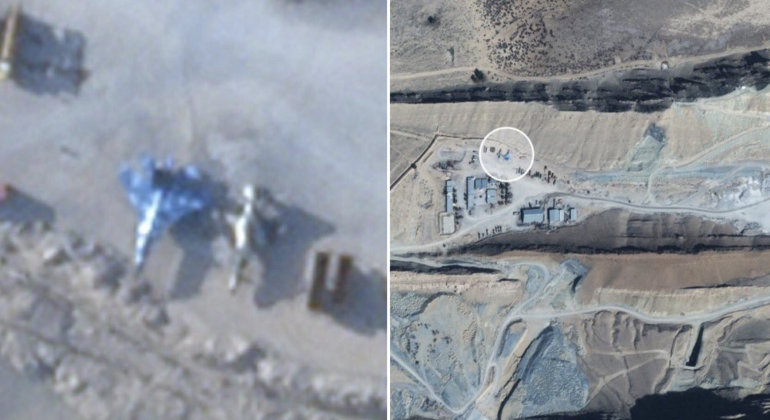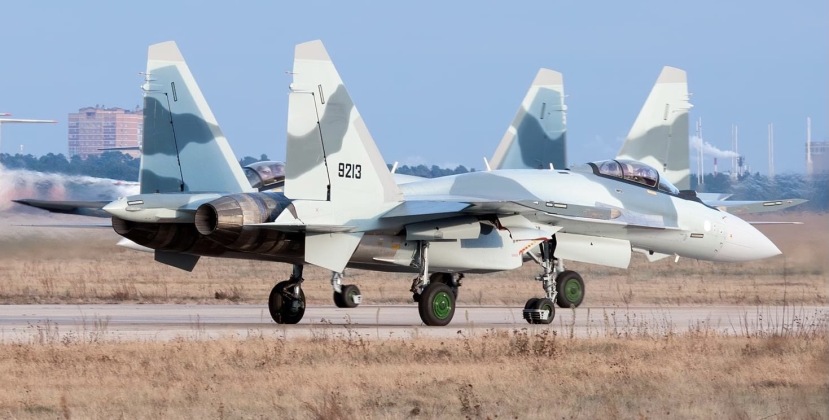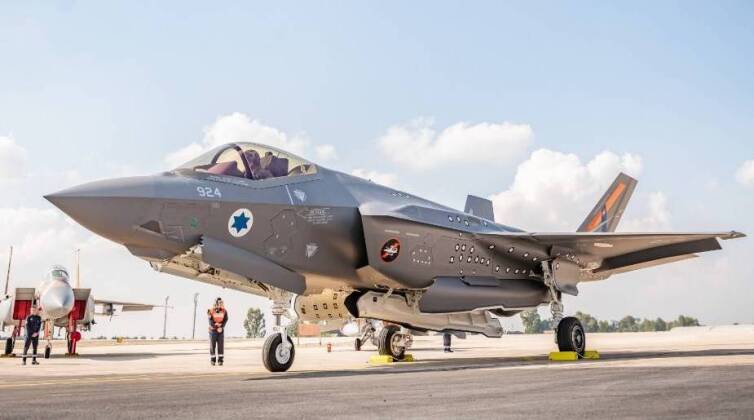News
Will Russia’s Latest Batch of Su-35s Deploy to a North Korean Fortified Base – And Patrol Iranian Nuclear Sites?
Following confirmation in 2022 that the Iranian Air Force would receive Russian Su-35 fighter aircraft, with personnel from the Middle Eastern country reportedly having begun training in Russia in preparation, Iranian official sources published footage of a new very heavily fortified airbase named Eagle 44. Built into the side of a mountain, allowing fighters to be stored and taxi internally alongside their munitions, with possible room for maintenance and personnel accommodations as well, the base connects to at least one runway and provides an effective means of preventing potential attackers from neutralising its aerial warfare assets on the ground. The facility was shown housing F-4D/E Phantom fighters which form the backbone of the Iranian Air Force, and although dating back to the Vietnam War era have been modernised with new avionics and a range of Chinese designed cruise missile classes and locally developed guided bombs.

North Korea is considered likely to have played a major role in the creation of Eagle 44 base, and having been a leading provider of defence related knowhow and equipment to Iran since the early 1980s, underground and mountain fortifications remain a leading area of expertise. Its provision of such services for Tehran was demonstrated when Iran financed an operation by North Korean specialists in the early 2000s to construct a massive network of tunnels and underground bunkers for the Iranian-aligned Lebanese militia Hezbollah, which proved key to its success in repelling an Israeli invasion attempt in 2006. North Korea has built airfields under mountains domestically since the Cold War, and provided such services to China while also offering them to North Vietnam during the Vietnam War. The country’s high level of expertise in the field, and the nature of its security ties to Iran over the past four decades, makes it by far the most likely source of the knowhow needed to have created Eagle 44.

While Eagle 44 alone can provide an important improvement to the survivability of fighter units made up of F-4s or their lighter counterpart the F-5, the cost effectiveness of investing in such a facility for such old aircraft has been questioned by a number of analysts since its unveiling. The possibility has since been raised that Eagle 44 is in fact intended to host at least a portion of the Su-35s Iran is set to receive from Russia. Providing a significant indicator of this, satellite imagery of the facility showed what appeared to be a mockup of a Su-35 next to an F-4 – potentially to ensure that all areas of the underground facility could accommodate the much larger Russian aircraft. Although the F-4 was considered very much a heavyweight when it entered service in 1960, the Su-35 as a heavyweight from the next generation is over 50 percent larger. A further indicator was provided by a silhouette of a Su-35 in the centre of a banner at Eagle 44 shown in footage of the facility, alongside silhouettes of existing Iranian fighter classes including F-4s, possibly showing the classes of aircraft that the facility was intended to accommodate.

New York Times reports indicated that Eagle 44 was located 160km north of the Strait of Hormuz, with the paper noting that Iran had for years been moving much of its critical military infrastructure underground. This followed a trend seen in North Korea’s armed forces for well over six decades, after U.S.-led bombardment of the country from the air levelled all major population centres during the Korean War and were responsible for the bulk of the millions of Korean casualties – which spurred development of underground fortifications. The Su-35 is approximately three decades newer than the most capable fighters in the Iranian Air Force, the MIG-29A and Su-24M ordered from the Soviet Union in the superpower’s final days and the F-14 Tomcat ordered over 15 years before that. The three form a small minority of the fleet, and are the only fourth generation fighters in Iranian service. The Su-35, although lacking stealth capabilities, integrates three separate phased array radars and one of the most powerful fighter based infrared sensors, which between them are well optimised to neutralising stealth targets. It also boasts cutting edge avionics and armaments, including the R-37M air to air missile which has approximately double the range of its top Western counterparts. These capabilities have fuelled expectations that Su-35s will be deployed to guard and patrol over key sites linked to the Iranian nuclear program, which the United States and its regional ally Israel have repeatedly trained to launch attacks against. Such attacks, if launched, would be spearheaded by advanced stealth aircraft.

Russia has produced over 150 Su-35s, at a rate of approximately 14 per year, with the class remaining the most capable in the Russian Air Force fielded at squadron level strength in terms of air to air performance. The fighter has the potential to revolutionise the Iranian military’s situational awareness by placing large modern sensors in the air in a way no other aircraft in the country’s service does. Iran’s purchase of an estimated 24 aircraft brings the Su-35 program closer to its intended goal fo 100 exported airframes, with the possibility having repeatedly been raised of much larger Iranian orders for the class to form the backbone of its fleet, one potentially including a license production agreement. Iranian forces notably have experience operating alongside Su-35s when they deployed as part of a joint network with Russian and Hezbollah forces for joint counterinsurgency operations in Syria from 2015, which likely influenced the decision to acquire the fighter.












